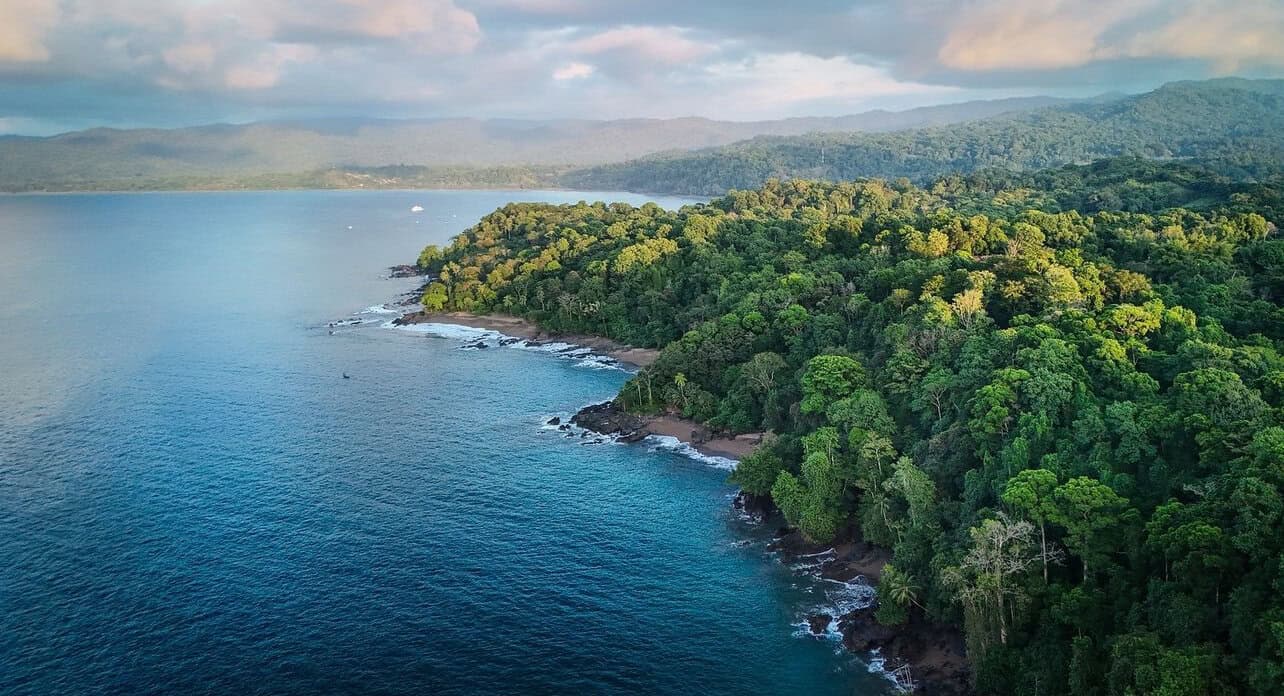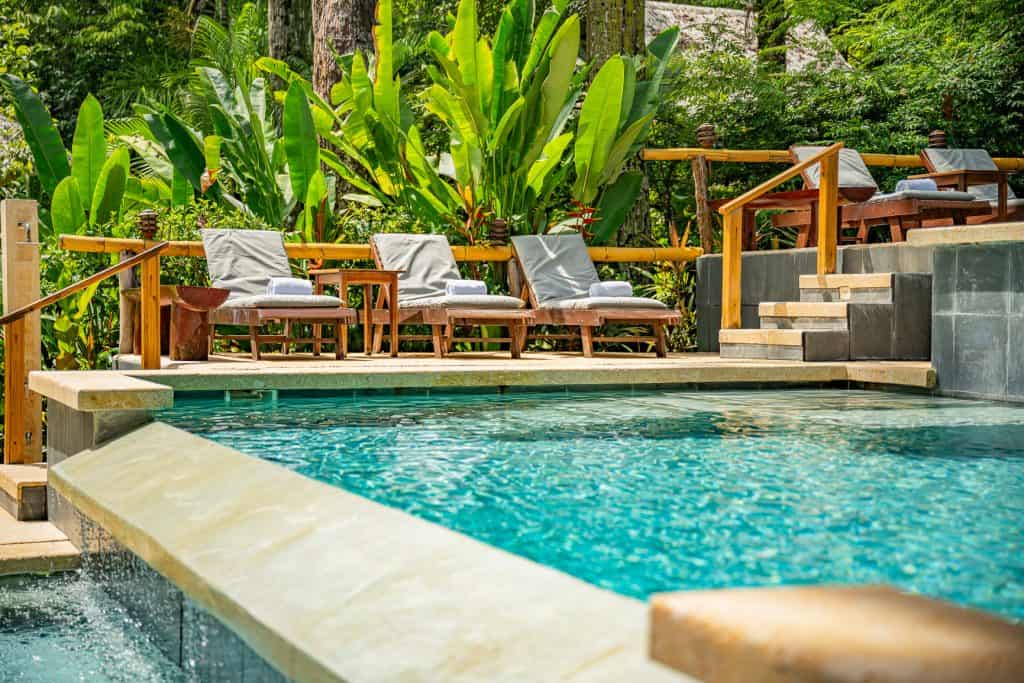OSA Peninsula: Comprehensive Trip Guide For First-Time Travelers
Top tips, must-see spots, and travel advice for your trip.
Jump To:
- Quick look at traveling to the Osa Peninsula
- How to get to the Osa Peninsula
- Important information before you start your trip
- Best time to visit the Osa Peninsula
- Where to stay when visiting the Osa Peninsula
- Best things to do in the Osa Peninsula
- Packing guide for the Osa Region
- Dining in Costa Rica’s emerald peninsula
- FAQ’s
The OSA Peninsula in Costa Rica is a pristine gem in the country’s southwestern region.
This area is renowned for its unparalleled biodiversity, housing 2.5% of the world’s species within its lush tropical rainforests and vibrant marine ecosystems.
Travelers can explore the Corcovado National Park, often hailed as one of the most biologically intense places on Earth, offering sightings of scarlet macaws, howler monkeys, and even reclusive jaguars.
The surrounding waters of Golfo Dulce and Caño Island Biological Reserve provide opportunities for snorkeling, scuba diving and whale watching.
Whether you’re an avid nature lover or seeking a tranquil retreat, the Peninsula De OSA offers an authentic and immersive experience in one of Central America’s last frontiers.
Over 10,000 insect species have been identified in the Osa Peninsula—including more than 700 butterfly species. That’s almost double the number found in the entire U.S.!
Recent Posts
Categories
Submit your email for discounts
Join our mailing list and receive special offers and discounted vacation packages directly to your email.
By clicking “Submit”, you are signing up to recieving emails from us. You can unsubscribe whenever you like.
QUICK LOOK AT TRAVELING TO THE OSA PENINSULA
| Category | Details |
|---|---|
| Best time to visit | Dry Season (Dec - April): Ideal for outdoor activities like hiking, snorkeling, and whale watching. Rainy Season (May - Nov): Lush landscapes and fewer tourists, but expect heavy rains. |
| How to get there | By Air: Flights from San José (SJO) to Puerto Jiménez or Drake Bay (30-45 mins). Airlines: Sansa and Nature Air. By Land: 7-9 hour drive from San José; a 4WD is recommended. By Boat: From Sierpe to Drake Bay (about 1 hour). |
| To stay | Wake up to monkeys and macaws at Copa de Arbol, a boutique eco-resort on Costa Rica’s wild Osa Peninsula. It’s the ideal base for exploring Corcovado and snorkeling Caño Island. |
| Activities | Explore Corcovado National Park. Snorkeling/Scuba Diving at Caño Island Biological Reserve. Whale & Dolphin Watching. Hiking, birdwatching, and beach hopping. |
| Local transportation | Rental Car: Recommended for flexibility (4WD required for some roads). Public Bus: Affordable but slower. Boat Rides: Essential for reaching Drake Bay and tours. |
| Dining options | Local Cuisine: Fresh seafood, gallo pinto (rice and beans), tropical fruits. Top Picks: Gringo Curt’s (Drake Bay), Marisquería Corcovado (Puerto Jiménez) |
| Safety tips | Wildlife Caution: Avoid feeding animals. Mosquito Protection: Use insect repellent and wear long sleeves in the evening. Insurance: Check for mandatory insurance when renting cars in Costa Rica. |
| Travel tips | The OSA Peninsula in Costa Rica is a hotspot for ecotourism. Choose accommodations and tours that support conservation efforts. Cash is preferred in remote areas; ATMs are limited. |
HOW TO GET TO THE OSA PENINSULA?
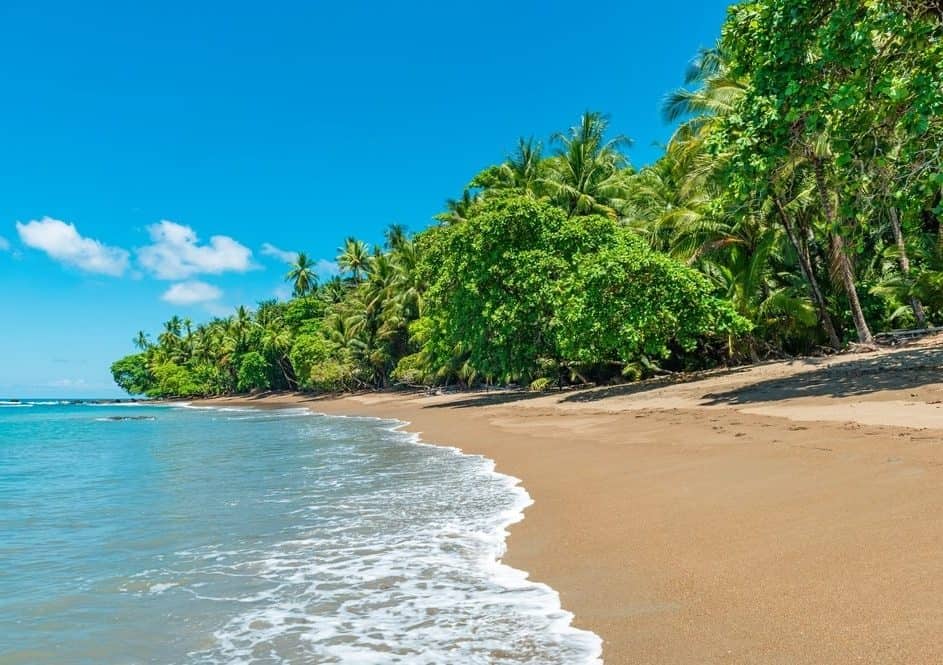
Costa Rica’s Osa Peninsula, located in southwestern Costa Rica, is accessible via air, land, and sea.
By choosing the mode of transportation that best fits your itinerary and comfort level, you can ensure a smooth journey to the Peninsula De OSA, ready to explore its rich biodiversity and natural beauty.
By Air
- Destinations: Flights from San José’s Juan Santamaría International Airport (SJO) to Drake Bay (DRK) and Puerto Jiménez (PJM).
- Airlines: Sansa Regional and Costa Rica Green Airways offer daily flights.
- Flight Duration: Approximately 50 minutes.
- Approximate Costs: According to skyscanner, Round-trip fares range from $150 to $300, varying by season and booking time.
By Land
- Driving:
- Route: From San José, take Route 27 to Caldera, then Route 34 (Costanera Sur) to Palmar Norte, and finally Route 245 to Puerto Jiménez or Drake Bay.
- Distance & Time: Approximately 370 km (230 miles) to Puerto Jiménez, taking around 7-8 hours.
- Vehicle Recommendation: A 4WD vehicle is advisable, especially during the rainy season (May to November), due to unpaved and potentially muddy roads.
- Public Bus:
- Service: Transportes Blanco operates daily buses from San José to Puerto Jiménez.
- Duration: Approximately 8-9 hours.
- Cost: Around $15 to $20 one-way.
- By Boat
Route to Drake Bay:- Starting Point: Drive or take a bus to Sierpe, a town near Palmar Norte.
- Boat Transfer: From Sierpe, take a boat taxi through the Sierpe River and out to the Pacific Ocean, arriving at Drake Bay.
- Duration: Approximately 1 to 1.5 hours.
- Cost: Around $15 to $20 per person.
- Schedule: Boats typically depart twice daily, around 11:30 AM and 3:30 PM.
- What to Expect: The journey offers scenic views of mangroves and provides an opportunity for potential wildlife sightings. Be prepared for wet landings; waterproof bags are recommended for luggage.

Additional Tips
- Advance Booking: Especially during the dry season (December to April), it’s advisable to book flights and accommodations in advance due to high demand.
- Weather Considerations: During the rainy season, some roads might be challenging. Always check current road conditions and weather forecasts before traveling.
- Local Transportation: Once on the peninsula, options include rental cars, taxis, and boat taxis. Note that some areas are only accessible by boat or on foot.
IMPORTANT INFORMATION BEFORE YOU START YOUR TRIP
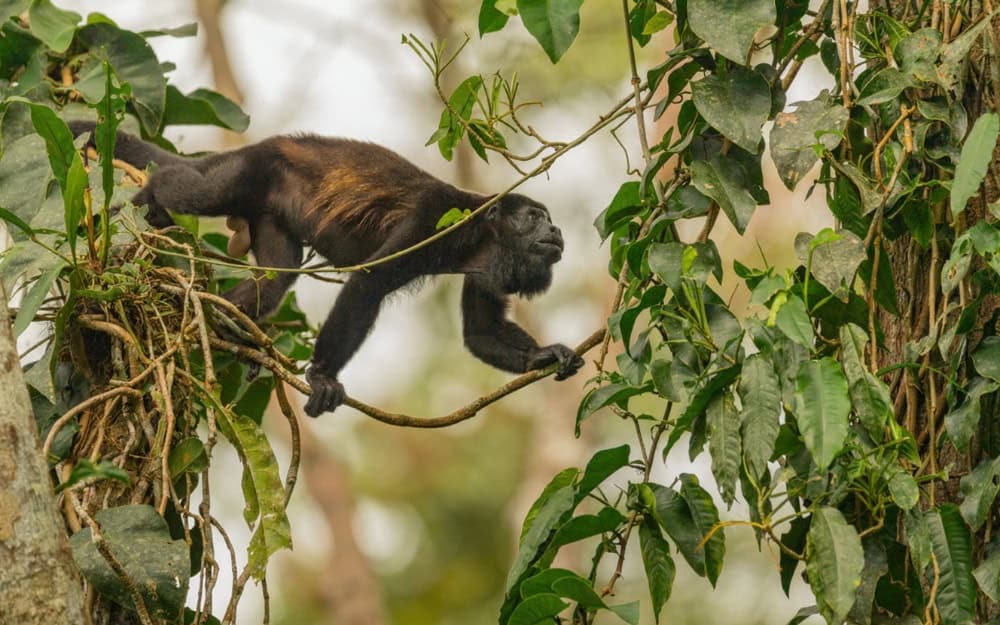
- Currency and costs:
Currency: Costa Rican colón (CRC) and USD are widely accepted.
Daily Expenses: Meals ($8–$12 at sodas; $30–$50 at mid-range restaurants). Tours ($50–$150). Accommodations ($20–$300+).
Tipping: 10% is customary for guides; restaurants usually include a 10% service charge.
Money Exchange: Exchange at banks in San José or Puerto Jiménez; ATMs are limited in rural areas. - Health and safety:
Mosquito Protection: Use picaridin or DEET-based repellents, wear long sleeves, and use mosquito nets.
Water Safety: Drink bottled or filtered water.
Emergency Contacts: Local clinics in Puerto Jiménez; Emergency number 911; Tourist Assistance Line +506 2299 5800. - Connectivity:
Wi-Fi Access: Available in most accommodations, though speeds are slow in remote areas. Some accommodation options like Copa De Arbol offer amenities like starlink wifi.
Mobile Networks: Coverage by Kolbi, Claro, and Movistar, but weak or unavailable in places like Corcovado National Park.
Power Outages: Common in rural areas during the rainy season; carry a power bank for devices. - Quick tips:
– Carry Cash: Many remote areas and small businesses don’t accept credit cards.
– Book Ahead: Secure accommodations and tours during the dry season.
– Pack Right: Lightweight clothing, bug spray, and waterproof gear are essential for navigating the rainforest.
BEST TIME TO VISIT THE OSA PENINSULA
The Osa Peninsula is a year-round destination, but understanding its seasons can help you plan the perfect trip to this tropical rainforest paradise.
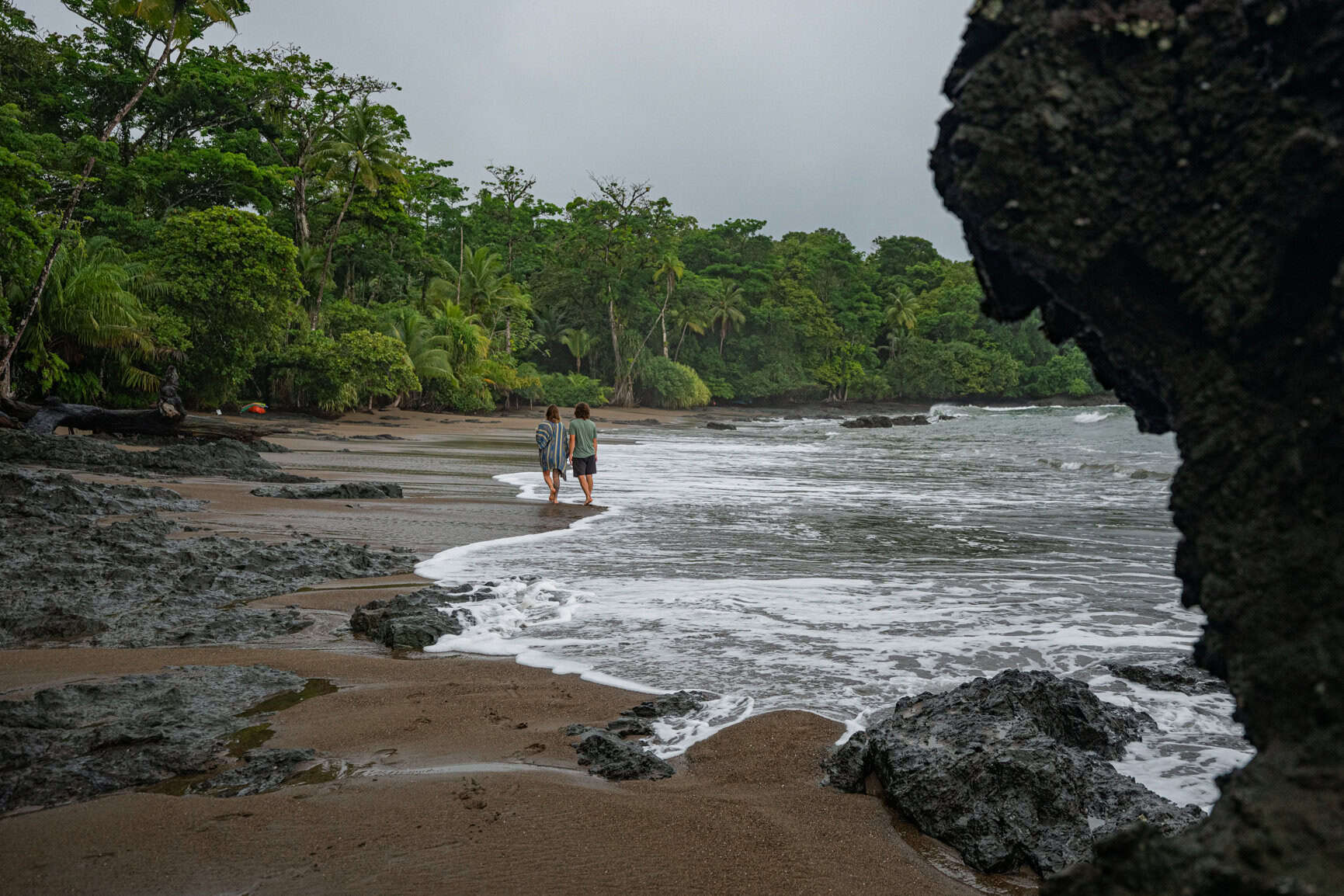
Dry Season (December to April)
Known as the peak travel period, the dry season offers sunny days, making it ideal for hiking, wildlife spotting, and exploring pristine beaches.
With fewer rains, trails in Corcovado National Park are easier to navigate, and water activities like snorkeling and scuba diving around Caño Island are crystal clear.
Average temperatures hover around 85°F (29°C) during the day with cool nights.
Rainy Season (May to November)
While rains intensify, this period transforms the Osa into a lush, vibrant wonderland. The forests are alive with blooming flowers, and scarlet macaws, howler monkeys, and other wildlife are active.
Fewer crowds during this season make it perfect for nature enthusiasts seeking solitude.
Adventurous travelers will enjoy the challenge of wetter trails and boat rides to remote areas like Bahía Drake.
Budget-conscious travelers will find lower accommodation rates and deals at popular eco-lodges.
Daily rains typically occur in the afternoon, often leaving mornings clear for activities. Expect temperatures around 80°F (27°C) with high humidity.
Seasonal Wildlife Highlights
- Humpback Whale Migration: From August to October, the Golfo Dulce becomes a stage for these magnificent creatures. It’s a must-see experience for nature lovers and photographers.
- Turtle Nesting Season: Olive ridley and green sea turtles nest on beaches like Playa Carate from July to October, offering a unique wildlife encounter.
- Scarlet Macaw Sightings: These vibrant birds are abundant year-round but particularly active during the dry season.
When To Visit
- For hiking, wildlife photography, and marine life adventures, visit during the dry season when conditions are favorable.
- If you’re drawn to the vibrant greenery of the rainforest and fewer tourists, the rainy season offers an intimate experience.
- Plan your trip around special events. There is whale watching or turtle nesting to make your visit unforgettable.
WHERE TO STAY WHEN VISITING THE OSA PENINSULA
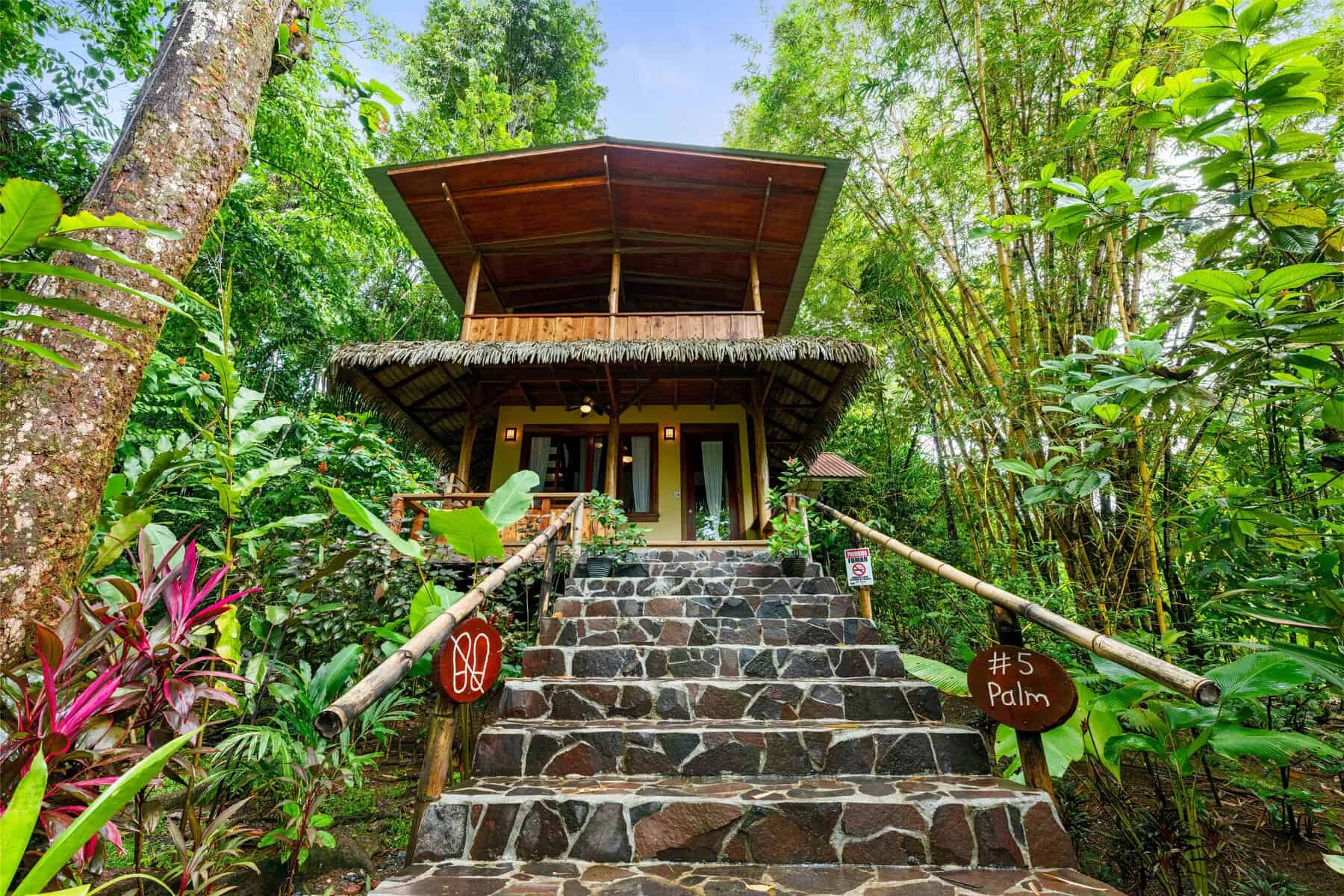
For those looking to experience the beauty of the Osa Peninsula without compromising on comfort, Copa De Arbol resort offers an unparalleled blend of eco-luxury and natural immersion. Nestled between the Pacific Ocean and lush rainforest, this resort offers the perfect balance for travelers seeking an unforgettable, sustainable stay.
Guests can expect:
Private oceanfront and rainforest villas: Designed to offer spectacular views of the ocean and the surrounding rainforest. Wake up to the sound of howler monkeys and fall asleep to the rhythm of the waves.
On-site activities: From private guided tours of Corcovado National Park, to snorkeling excursions at Caño Island, every adventure is crafted with sustainability in mind. The resort’s close proximity to pristine beaches ensures wildlife sightings right from your doorstep—whether it’s dolphins, scarlet macaws, or playful monkeys.
Gourmet dining: Copa de Arbol takes pride in sourcing organic, locally grown ingredients. Their dining options offer fresh, healthy meals, with an emphasis on Costa Rican flavors, prepared by world-class chefs. It’s a perfect way to experience the country’s culinary delights while enjoying views of the ocean and jungle.
Best for:
- Honeymooners seeking a romantic getaway surrounded by nature
- Nature enthusiasts who want to experience Costa Rica’s unique ecosystems in comfort
- Families and groups wanting a luxurious yet immersive rainforest experience
THE BEST THINGS TO DO IN THE OSA PENINSULA
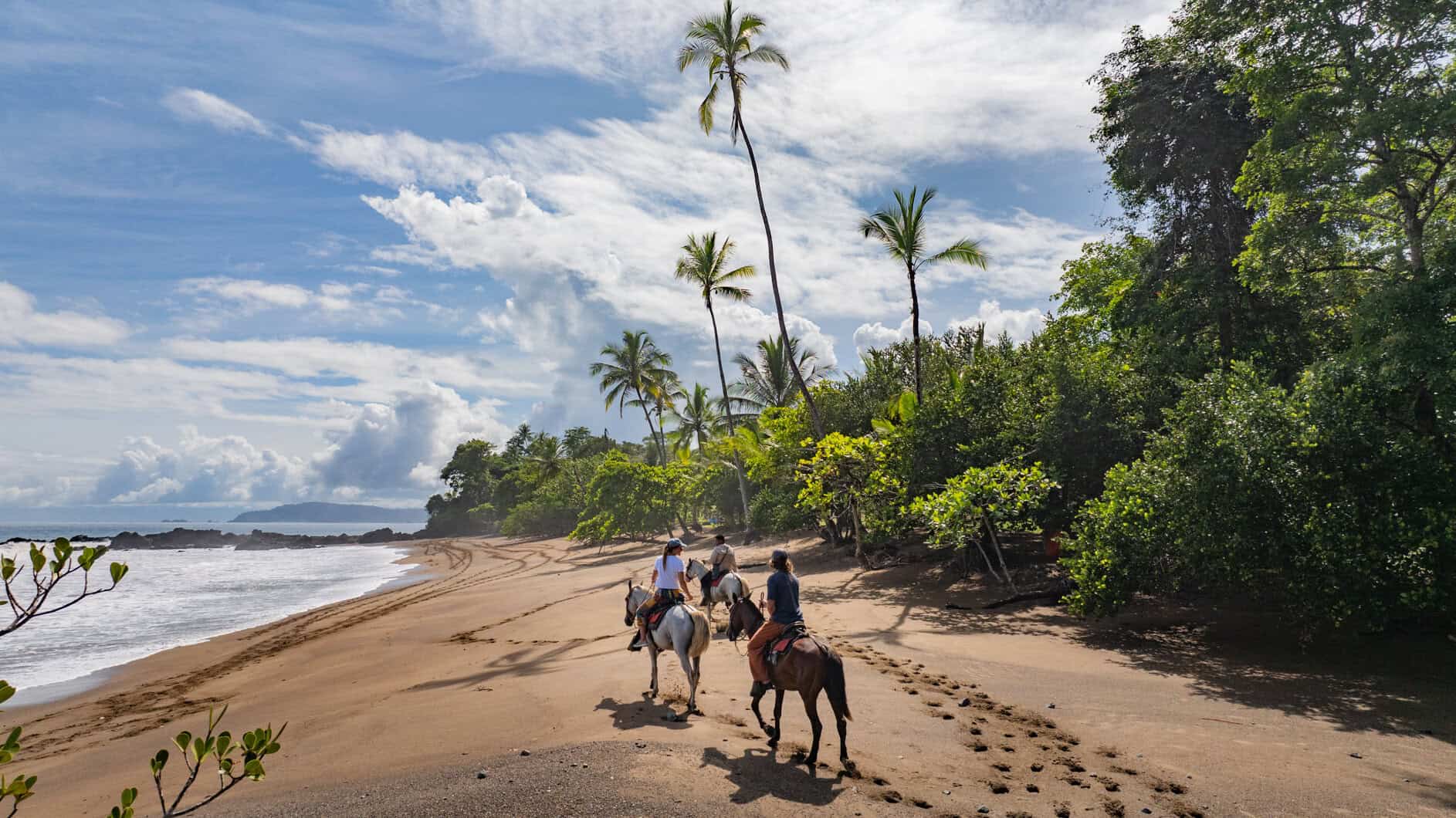
1. Corcovado National Park
Corcovado National Park is Costa Rica’s ecological crown jewel, home to scarlet macaws, jaguars, and howler monkeys. Entry requires permits and certified guides—self-guided tours are prohibited to protect the fragile ecosystem.
Popular trails range from day hikes to multi-day treks. The route to Sirena Ranger Station offers excellent wildlife viewing, where visitors frequently spot tapirs and spider monkeys.
Essential gear: Sturdy hiking boots, water, insect repellent, and lightweight rain gear (especially during rainy season).
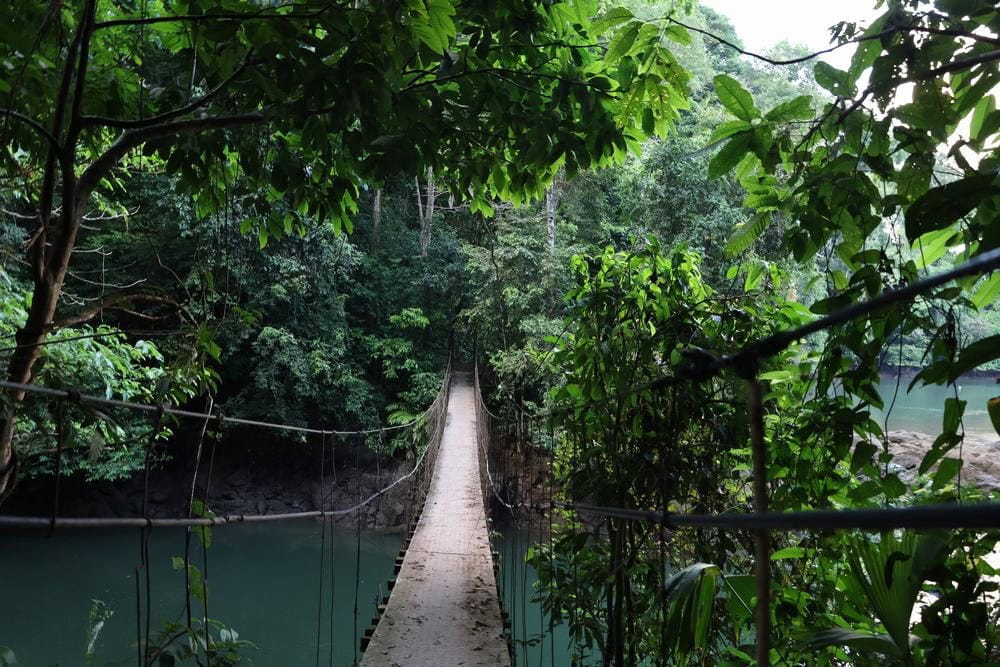
2. Snorkeling And Diving At Caño Island
The Caño Island Biological Reserve, 12 miles offshore, features thriving coral reefs and diverse marine life. Snorkelers can swim with reef sharks, manta rays, and sea turtles, while certified divers explore deeper waters filled with parrotfish and stingrays.
Visit during dry season for optimal conditions—underwater visibility reaches 100 feet. Most tours depart from Drake Bay, offering scenic coastal views en route.
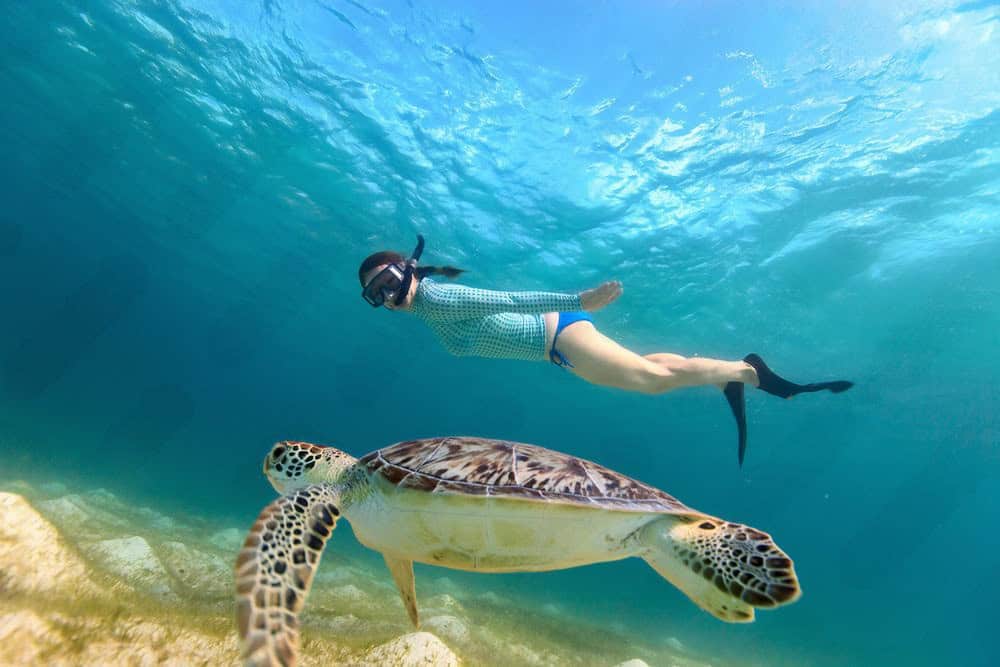
3. Whale And Dolphin Watching
The waters around Osa Peninsula, particularly Golfo Dulce, provide world-class whale and dolphin viewing. Humpback whales migrate here twice yearly: Southern Hemisphere whales (August-October) and Northern Hemisphere whales (January-March).
Spinner and bottlenose dolphins appear year-round. Ethical tours from Puerto Jiménez or Drake Bay support conservation efforts while offering unforgettable wildlife encounters.
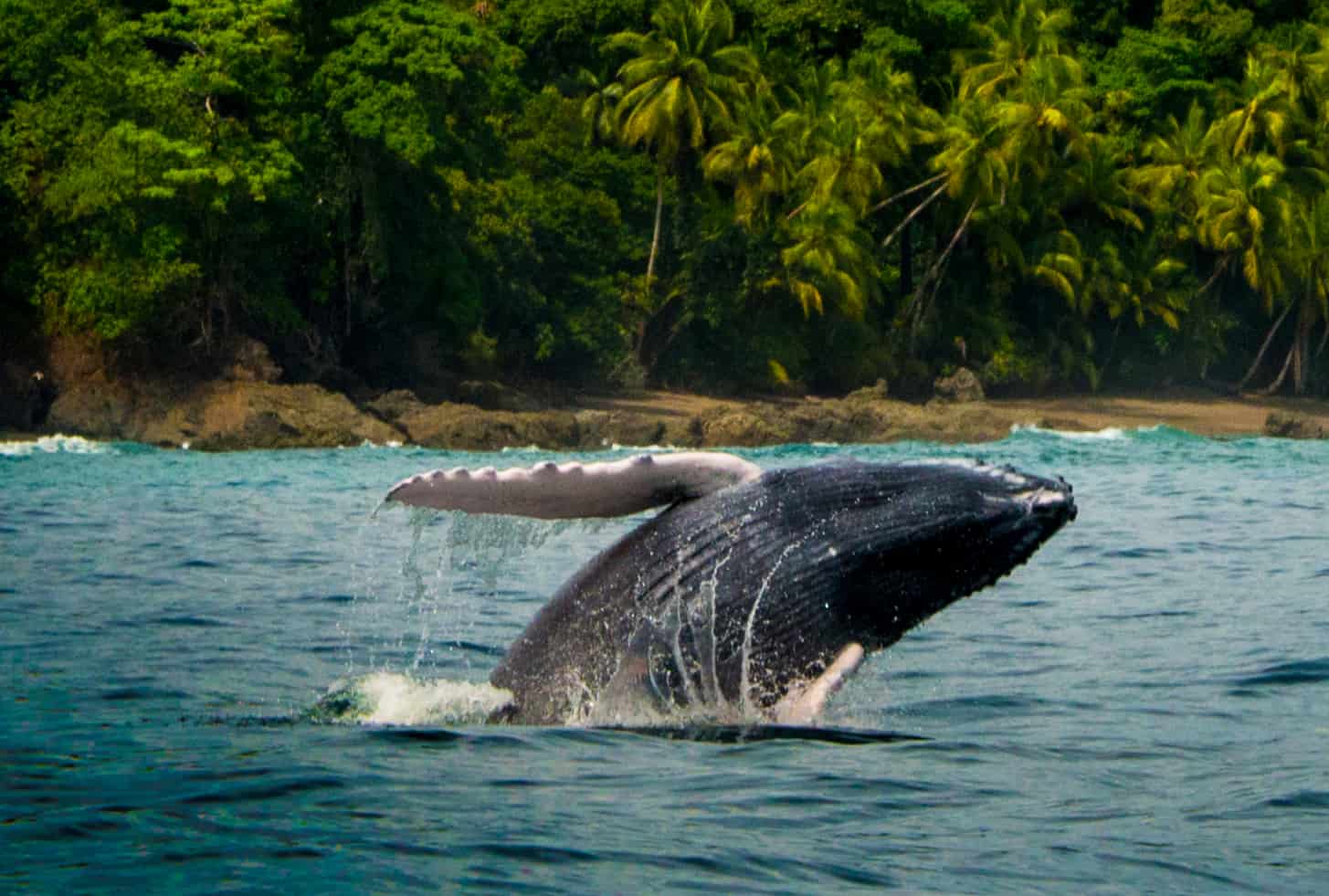
4. Hiking And Birdwatching
With over 400 recorded bird species, Osa Peninsula is a hiker’s and birder’s paradise. Trails vary from easy coastal walks to challenging rainforest treks.
Notable hiking routes:
- Rio Claro Nature Hike: Coastal trail with pristine beaches, tropical jungle, and river plunges. Optional canoe adventure to hidden waterfalls
- Trillo de la Danta: Primary and secondary forest trails in Golfo Dulce Forest Reserve with exotic fauna, towering trees, and waterfall swimming
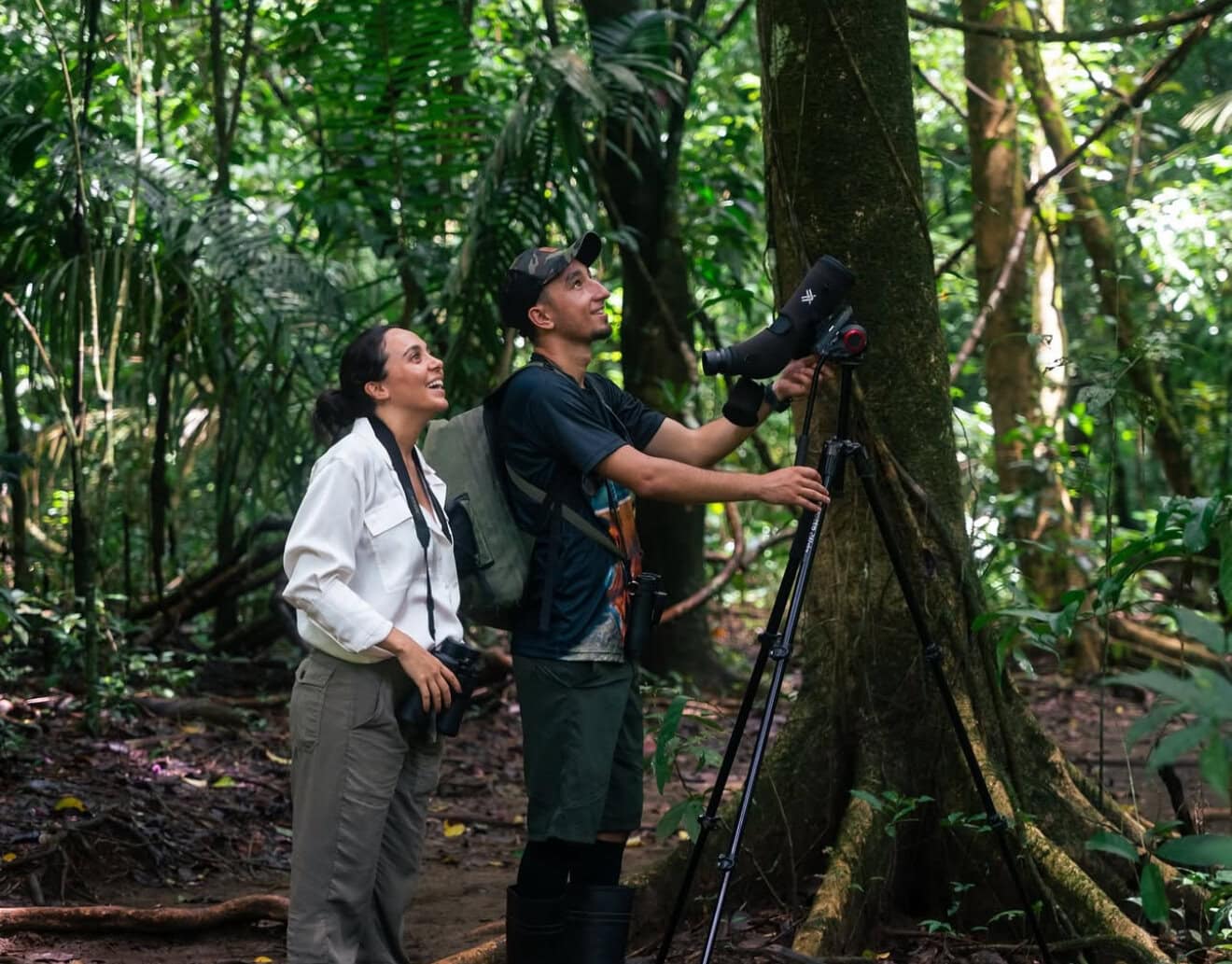
4. Beach Hopping
Osa Peninsula’s pristine beaches offer diverse experiences:
- Playa San Josecito: Calm waters perfect for snorkeling
- Playa Carate: Rugged and secluded with dramatic sunsets
- Playa Pan Dulce: Gentle waves ideal for beginner surfers
- Bahía Drake: Kayaking and mangrove exploration opportunities
5. Cultural Experiences
Connect with local traditions by visiting the Boruca Indigenous People to learn about their heritage through mask-making and storytelling.
Many eco-lodges near Puerto Jiménez practice sustainability and source ingredients locally. Try authentic dishes like ceviche, arroz con camarones, and fresh tropical fruits while supporting the local economy.
PACKING GUIDE FOR THE OSA REGION
Year-Round Essentials
- Clothing: Quick-drying shirts, shorts, long sleeves (sun/bug protection)
- Footwear: Sturdy hiking boots and comfortable sandals
- Protection: High-SPF sunscreen, insect repellent (DEET or picaridin)
- Hydration: Reusable water bottle
Rainy Season (May-November)
- Waterproof raincoat or poncho
- Waterproof dry bags for electronics
- Quick-drying, moisture-wicking fabrics
- Waterproof hiking boots or water shoes
- Collapsible umbrella
Wildlife Viewing:
- Binoculars (higher magnification for birdwatching)
- Waterproof camera or protective case
- Compact tripod for stable shots
Marine Activities:
Personal mask and snorkel (optional—most tours provide equipment)
General:
- Lightweight, waterproof daypack
- Headlamp or flashlight
- Hat and sunglasses
- Basic first aid kit with motion sickness medication
DINING IN COSTA RICA'S EMERALD PENINSULA
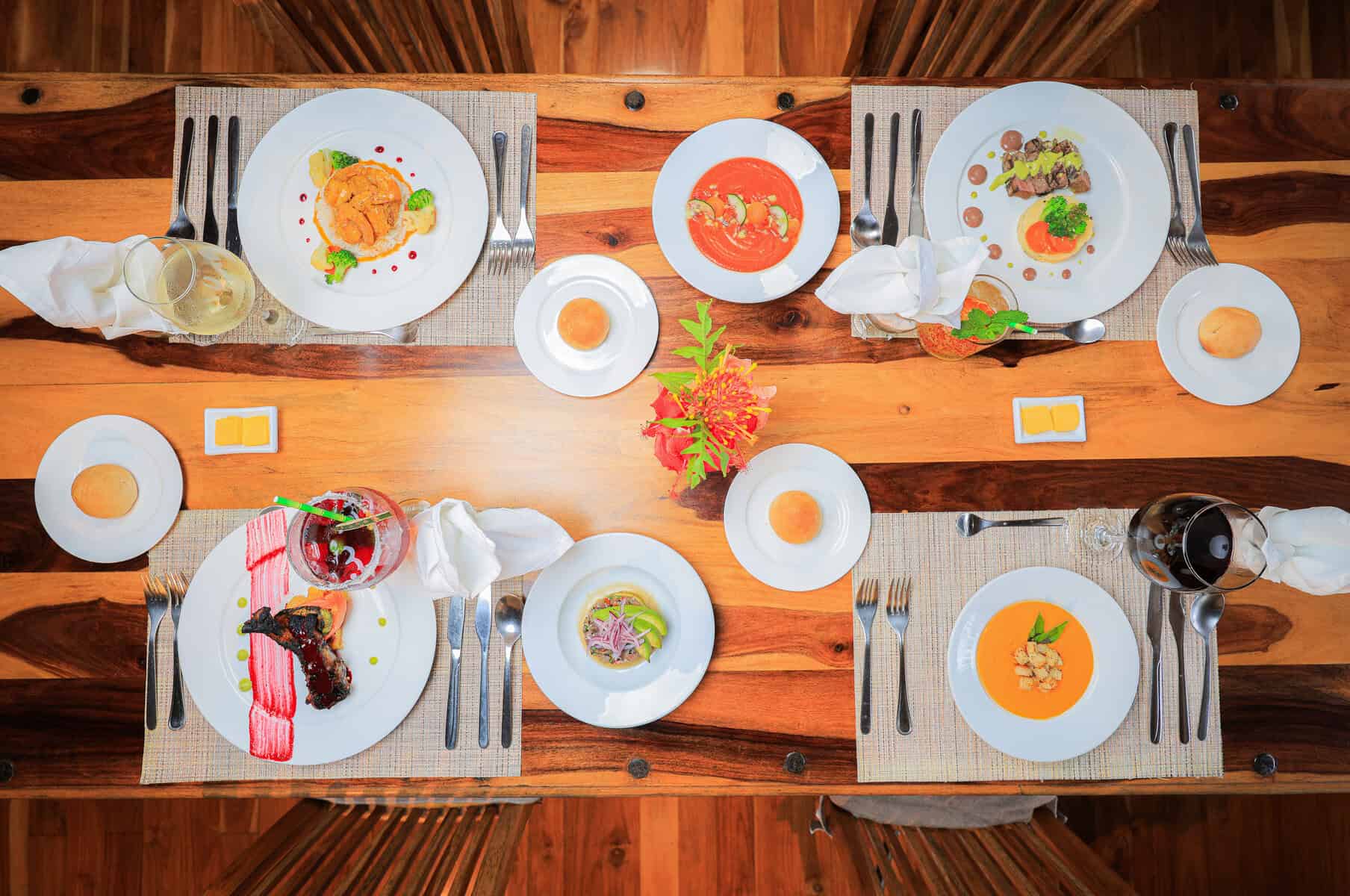
The peninsula’s cuisine focuses on fresh seafood, farm-to-table ingredients, and traditional Costa Rican flavors, with dining experiences ranging from intimate beachfront restaurants to local family-run establishments.
Explore Local Flavors
- Gallo Pinto: Rice and beans with onions, peppers, and cilantro—typically served at breakfast alongside eggs and plantains
- Fresh Ceviche: Marinated fish or shrimp with lime and herbs, showcasing the region’s abundant Pacific catches
- Arroz con Mariscos: Seafood rice with shrimp, mussels, and squid, often spiced with saffron
- Casado: Complete meal with rice, beans, choice of protein, fried plantains, and salad
- Tropical Fruits: Pineapples, mangoes, guanábana (soursop), and rambutan grown locally
- Coconut-infused dishes: Coconut rice and coconut curry seafood for authentic coastal flavors
Where To Dine
La Jungla by Trópico
Tucked away in the jungle near Drake Bay, La Jungla by Trópico is a laid-back spot known for serving up surprisingly good Thai food in one of the most remote parts of Costa Rica.
The open-air setting gives you a real “dining in the rainforest” vibe, with monkeys and birds often providing the background soundtrack.
The menu leans into Thai classics—think green curry, stir-fries, and spring rolls—all made fresh and full of flavor. It’s also a great place to grab a mojito or cocktail while you watch the sunset through the trees.
Mirimar Bar and Restaurante at Copa De Arbol offers an exceptional farm-to-table dining experience with stunning ocean views.
The restaurant sources ingredients from local farms and fishermen, creating authentic Costa Rican dishes. Their beachfront location provides the ideal setting to savor fresh ceviche or grilled red snapper while watching the sunset over Drake Bay.
*Please note this restaurant is only open to resort guests. Please contact us to book your stay at Copa De Arbol.
For additional local flavor, visit the region’s charming sodas (family-run eateries) in Drake Bay and Puerto Jiménez, where you can enjoy hearty casados and tropical smoothies at affordable prices. These unassuming spots offer the most authentic taste of Costa Rican home cooking.
FAQ's
The dry season (December to April) is ideal for hiking and snorkeling, while the rainy season (May to November) offers lush landscapes and fewer tourists.
Travelers can fly from San José to Drake Bay or Puerto Jiménez, drive (preferably a 4WD), or take a boat from Sierpe.
Key attractions include Corcovado National Park, Caño Island Biological Reserve, Golfo Dulce, and the pristine beaches like Playa San Josecito.
Yes, options like Martina’s Place and Corcovado Adventures Tent Camp provide affordable stays with easy access to key activities.
You can hike guided trails, spot wildlife like scarlet macaws and tapirs, and enjoy an immersive rainforest experience.
Wi-Fi is available in Puerto Jiménez and Drake Bay, though speeds are slow in remote areas, especially during bad weather.
Expect to encounter scarlet macaws, howler monkeys, jaguars, humpback whales, and sea turtles, depending on the season and location.

Andrea - Costa Rican Travel Guide
Andrea is a seasoned traveler and an expert on Costa Rica. She has spent a number of years travelling around Costa Rica and exploring it's natural wanders. Andrea is an avid birdwatcher and loves spending time outdoors hiking and taking photos of her favourite birds.
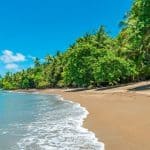
Don't Miss Out On Exclusive Offers!
Join our mailing list and receive special offers and discounted vacation packages directly to your email.
By clicking “Submit”, you are signing up to recieving emails from us. You can unsubscribe whenever you like.


